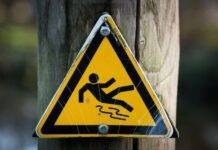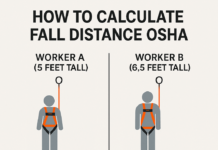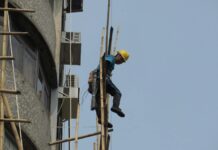
Work at Height Basic Safety Knowledge
Introduction
Work at Height Basic Safety Knowledge : In the realm of occupational safety, one of the critical areas of concern is working at heights. Whether you’re a construction worker, window cleaner, or tree pruner, understanding the basics of safety when working at heights is paramount. In this article, we will delve into the essential knowledge needed to ensure the safety of individuals involved in tasks that require them to be elevated above the ground.
Understanding the Risks
Working at height presents numerous risks, and it’s crucial to comprehend them before embarking on any such task. Falls from heights are one of the leading causes of workplace fatalities and injuries. It’s essential to recognize the potential hazards associated with working at heights, such as unstable surfaces, equipment failure, and adverse weather conditions.
Regulatory Requirements
To address the inherent risks, various regulatory bodies have established standards and guidelines to ensure the safety of workers. Depending on your location, these regulations may vary, but they typically require employers to provide proper training, equipment, and fall protection measures.
Training and Certification
One of the fundamental aspects of work at height safety is ensuring that workers are adequately trained and certified. This training should cover the proper use of equipment, hazard identification, and emergency procedures. Certification programs are available to validate the competence of workers in this regard.
Fall Protection Equipment
The cornerstone of safety when working at heights is the use of fall protection equipment. This includes items such as harnesses, lanyards, and safety nets. It’s vital to choose the right equipment for the specific task and ensure it is regularly inspected for defects.
Proper Planning
Before any work at height commences, a detailed plan should be in place. This plan should outline the task, identify potential hazards, and specify safety measures. Adequate planning can prevent accidents and ensure that everyone involved knows their role in maintaining safety.
Scaffold Safety
Scaffolding is a common platform used in various industries for work at height. Understanding how to erect, use, and dismantle scaffolds safely is essential. This includes ensuring the scaffold’s stability, secure access, and guardrails.
Ladder Safety
Ladders are another tool frequently used for working at heights. Using ladders correctly involves selecting the right type, placing them on stable surfaces, and maintaining three points of contact while climbing.
Fall Arrest Systems
Fall arrest systems are designed to prevent falls and reduce the impact of a fall if it occurs. They often include shock-absorbing lanyards and anchor points. Understanding how to use these systems is crucial.
Emergency Response
Even with all safety precautions in place, accidents can still happen. Knowing how to respond in case of a fall or other emergencies is vital. This includes first aid training and having a plan for contacting emergency services.
Weather Considerations
Weather conditions can significantly affect the safety of working at heights. Wind, rain, and snow can make surfaces slippery and unstable. It’s essential to monitor weather forecasts and suspend work if conditions become hazardous.
Personal Protective Equipment
In addition to fall protection gear, workers should wear appropriate personal protective equipment (PPE) for the task. This may include helmets, gloves, and eye protection.
Work Platform Safety
For tasks that require a work platform, such as aerial lifts or cherry pickers, operators must be trained in their safe operation. These machines come with their unique set of risks.
Inspections and Maintenance
Regular inspections and maintenance of equipment and work platforms are essential. Faulty equipment can lead to accidents, so it’s crucial to address any issues promptly.
Supervision and Communication
Effective communication and supervision are key to ensuring safety when working at heights. Workers should be able to communicate with each other and their supervisors to report hazards or seek assistance.
Conclusion
Working at heights can be perilous, but with the right knowledge and precautions, the risks can be significantly reduced. Employers and workers alike must prioritize safety and adhere to regulations to ensure that everyone goes home safely after a day of working at heights.
The Importance of Fall Protection
Work at Height Hazards and Precautions
What is a Safe Ratio for Working on a Portable Ladder?
Work at Height Hazards and Precautions
FAQs
- What are the common risks associated with working at heights?
- Falls from heights, unstable surfaces, equipment failure, and adverse weather conditions are common risks.
- Do I need certification to work at heights?
- Certification requirements vary by location and type of work, but it’s generally advisable to undergo relevant training and certification programs.
- What should I do in case of a fall or emergency while working at heights?
- First, seek medical attention if necessary. Ensure you are familiar with emergency procedures and have a plan in place to contact emergency services.
- How often should fall protection equipment be inspected?
- Fall protection equipment should be inspected before each use and at regular intervals as specified by the manufacturer.
- Can I work at heights in adverse weather conditions?
- It is not recommended to work at heights in adverse weather conditions, as they can increase the risk of accidents. Monitor weather forecasts and suspend work if conditions become hazardous.
























